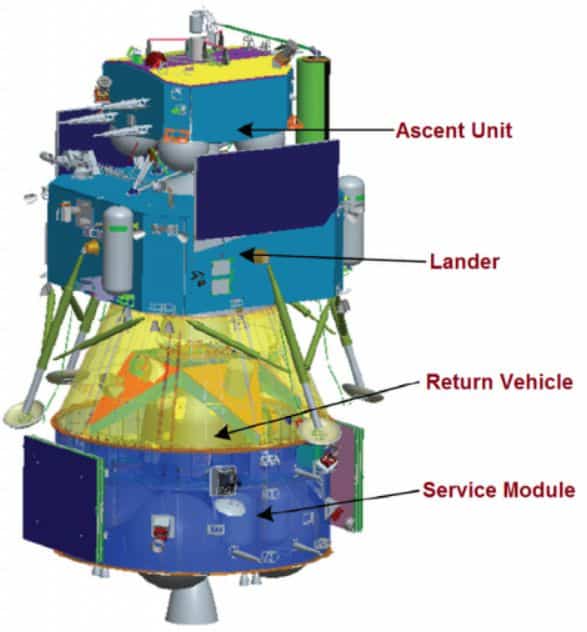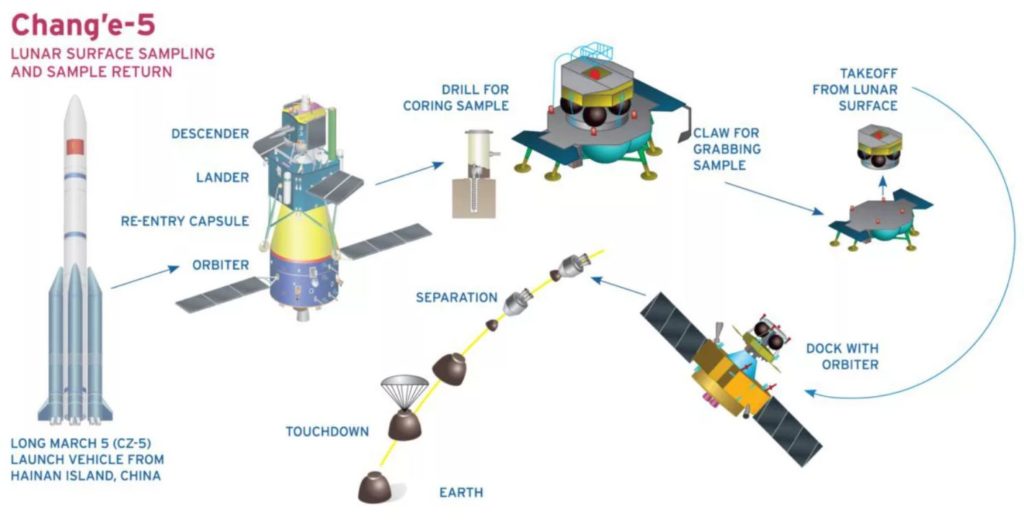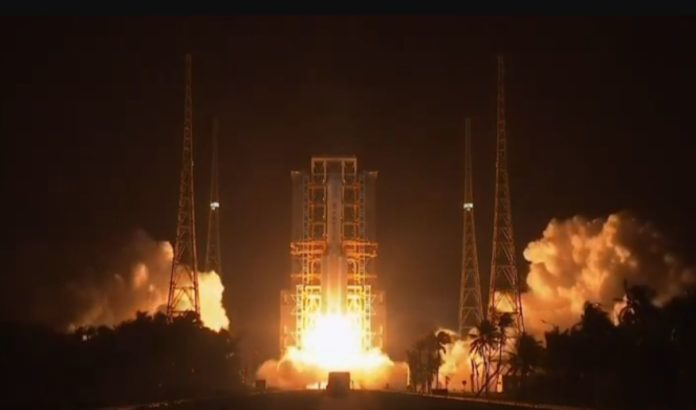The Chinese spacecraft Chang’e-5 takes off from the Wenchang Satellite Launch Center in Hainan, China. The mission will last one lunar day (14 Earth days) and must collect rock and dust samples that will be returned to Earth in mid-December.
Chang’e-5 is named after the moon goddess in Chinese mythology and is the sixth mission of China’s robotic lunar exploration.
The collected rocks should help scientists better understand the chronology of the last known volcanic activity on Earth’s satellite which is believed to have taken place between 1 billion to 3.5 billion years ago. China seeks to be the third country after the US and the USSR to successfully make a soft landing.
In total, the mission involves four modules, their total weight is about 8 tons. The flight from near-earth orbit to circumlunar and back will provide a service module. After entering the lunar orbit, the descent module, which is equipped with cameras, a spectrometer, a drill and a manipulator, will separate from the service module and is capable of obtaining a soil sample from a depth of up to two meters, with a total mass of up to two kilograms.

The landing itself on the moon will take place at the beginning of a lunar day. Then the soil sample will be transferred to the takeoff module, which will enter the lunar orbit, where it will dock with the service module. The soil samples will then be placed in the return capsule. Then the service module will fly to Earth and, being at a distance of 5 thousand kilometers from the planet, will drop a capsule into the atmosphere, which should land softly by parachute.

The key task of the mission is to drill about six feet below the satellite’s surface and collect about 2 kg of rocks and other debris to bring it back to Earth, according to NASA. That will be the first opportunity scientists will have to study lunar material since 1976.
If “Chang’e-5” fulfils all the tasks, then China will become the third country to deliver a sample of the lunar soil to Earth, and the next in the series “Chang’e-6” will try to collect soil samples from the polar region of the Moon.
